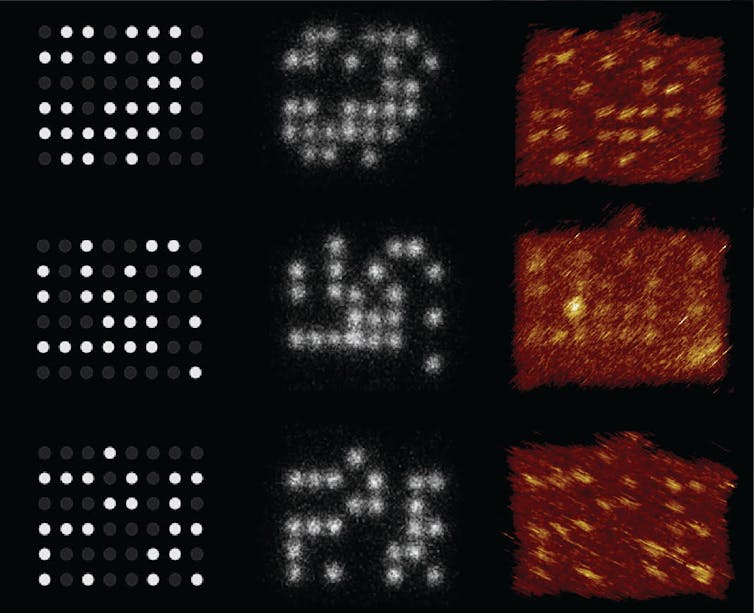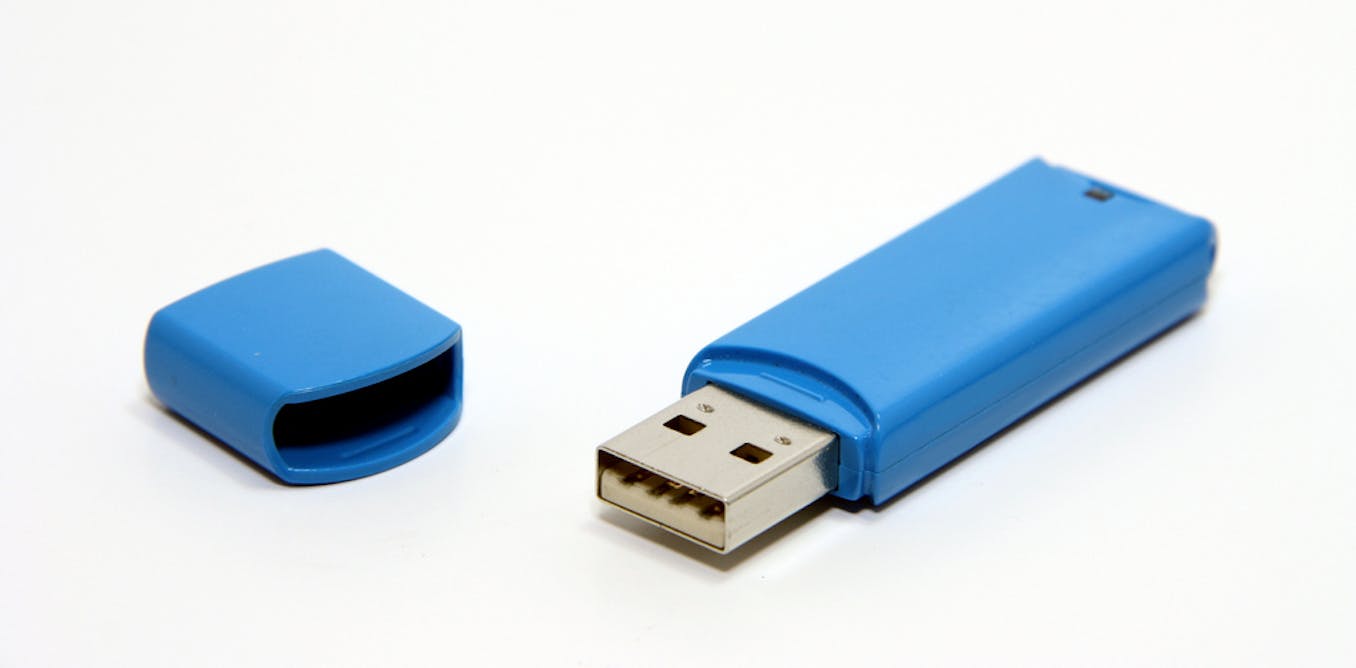
The Analysis Temporary is a brief take about attention-grabbing educational paintings.
Contents
The massive concept
We and our colleagues have advanced a strategy to retailer records the use of pegs and pegboards created from DNA and retrieving the information with a microscope – a molecular model of the Lite-Brite toy. Our prototype retail outlets knowledge in patterns the use of DNA strands spaced about 10 nanometers aside. Ten nanometers is greater than one thousand occasions smaller than the diameter of a human hair and about 100 occasions smaller than the diameter of a bacterium.
We examined our virtual nucleic acid reminiscence (dNAM) via storing the commentary “Information is in our DNA!n.” We described the analysis in a paper printed within the magazine Nature Communications on April 22, 2021.
Earlier strategies for retrieving records in DNA require the DNA to be sequenced. Sequencing is the method of studying the genetic code of strands of DNA. Despite the fact that this can be a robust instrument in drugs and biology, it wasn’t designed with DNA reminiscence in thoughts.
Our manner makes use of a microscope to learn the information optically. Since the DNA pegs are located nearer than half of the wavelength of visual mild, we used super-resolution microscopy, which circumvents the diffraction restrict of sunshine. This offers a strategy to learn the encoded records with out sequencing the DNA.

Nucleic Acid Reminiscence Institute at Boise State College, CC BY-ND
The patterns of DNA strands – the pegs – remove darkness from when fluorescently categorized DNA bind to them. Since the fluorescent strands are brief, they swiftly bind and unbind. This reasons them to blink, making it more straightforward to split one peg from every other and browse the saved knowledge. We use the fluorescent patterns of every pegboard as a code to retailer chunks of knowledge.
The microscope can symbol masses of hundreds of the DNA pegs in one recording, and our error-correction algorithms make sure that we get better all the records. After accounting for the bits utilized by the algorithms, our prototype was once in a position to learn records at a density of 330 gigabits in keeping with sq. centimeter.
Why it issues
You’re not really to have a DNA garage tool for your telephone or laptop, no less than anytime quickly. DNA records garage is promising for archival garage – storing massive quantities of knowledge for lengthy classes of time. DNA can retailer numerous knowledge in a small house. It could be imaginable to retailer each tweet, e mail, picture, tune, film and e-book ever created in a quantity identical to a jewellery field. And information saved in DNA may closing for hundreds of years, for the reason that the biomolecule has a half-life of over 500 years.
What different analysis is being performed
Researchers were creating strategies of storing records in DNA for a number of many years. The ones strategies contain the design and synthesis of distinctive strings of knowledge constituted of the DNA nucleotides adenine (A), thymine (T), cytosine (C) and guanine (G). This knowledge is recovered via studying the strings the use of sequencing generation.
What’s subsequent
From right here, our purpose is to extend the quantity of knowledge that we will retailer in dNAM, lower the period of time it takes to jot down and browse the information, and use the approach to encrypt records.
[Get our best science, health and technology stories. Sign up for The Conversation’s science newsletter.]
Supply By way of https://theconversation.com/dna-lite-brite-is-a-promising-way-to-archive-data-for-decades-or-longer-157856






